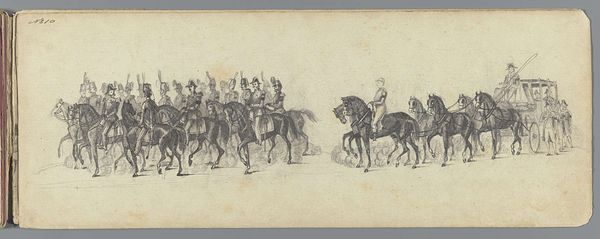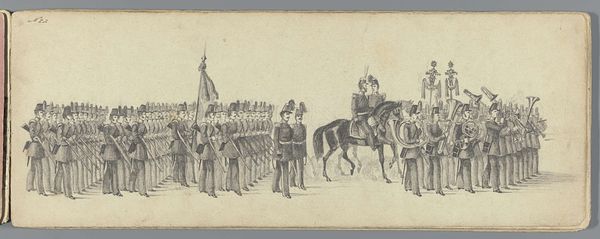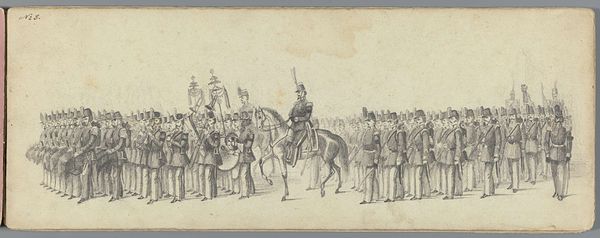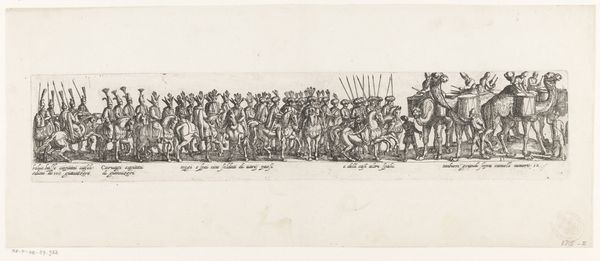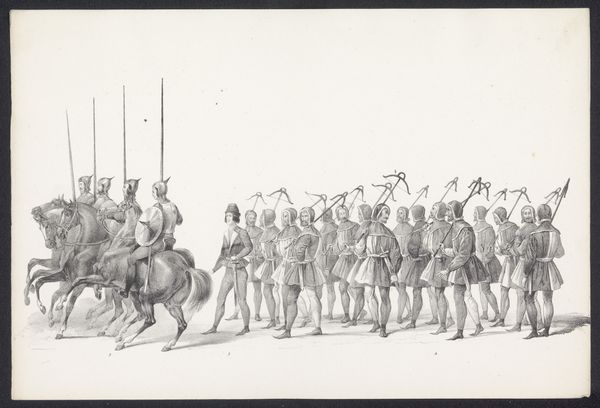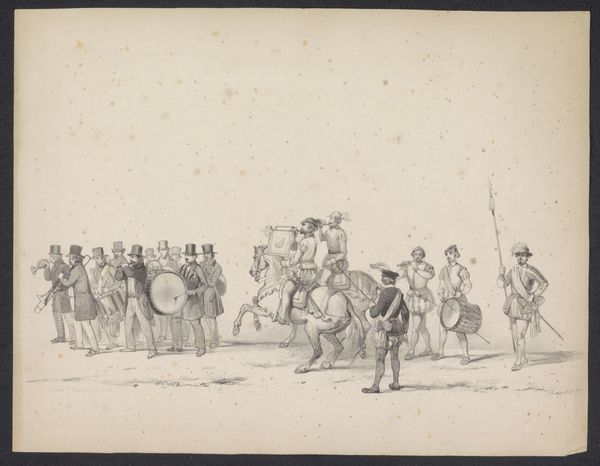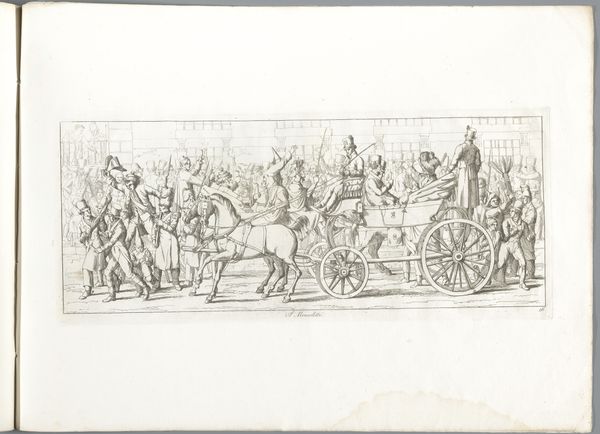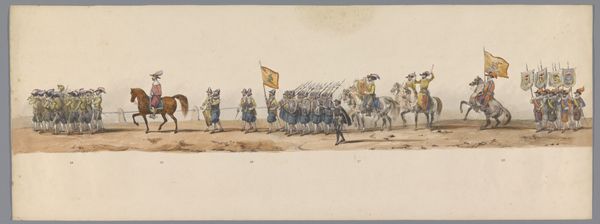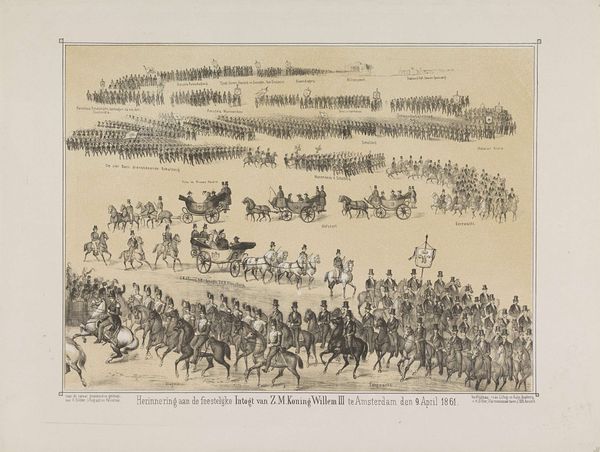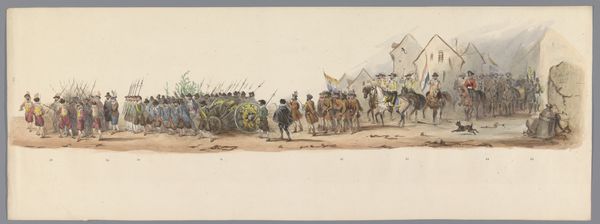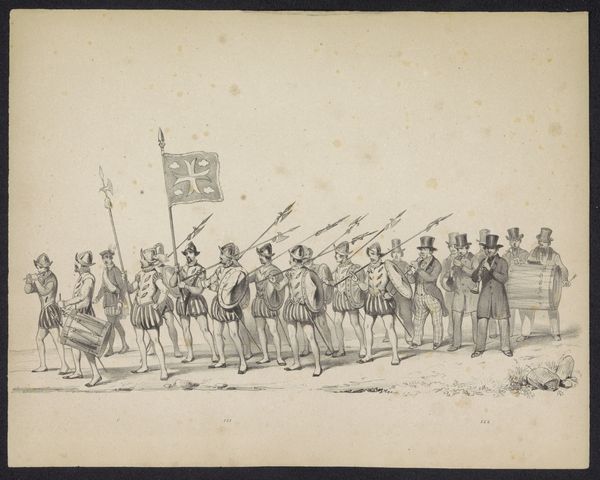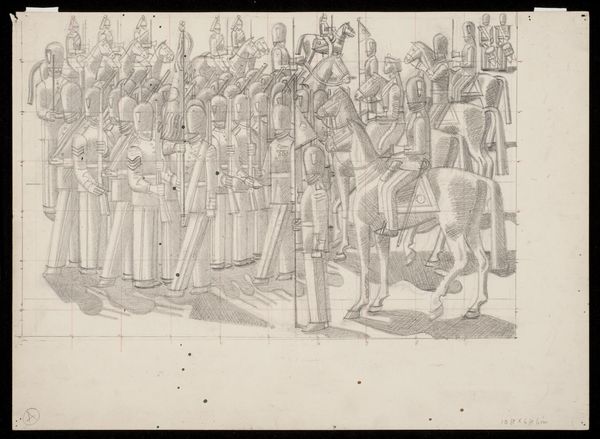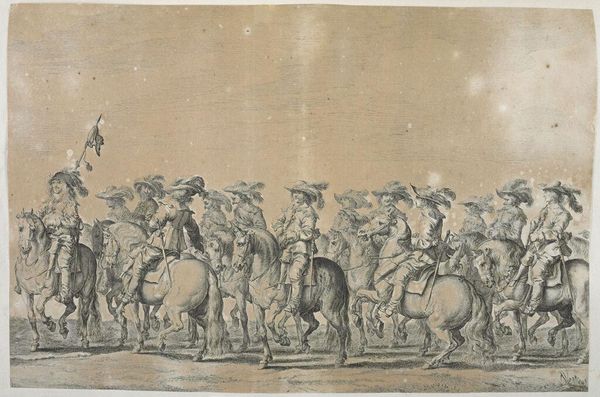
drawing, pencil
#
drawing
#
landscape
#
pencil
#
realism
Dimensions: height 140 mm, width 365 mm
Copyright: Rijks Museum: Open Domain
Curator: Welcome. Today, we’re looking at "Begrafenisstoet van Anna Paulowna (blad 1), 1865"—Funeral Procession of Anna Paulowna, sheet 1, from 1865. This pencil drawing comes from an anonymous hand. Editor: Immediately striking is its austerity. The palette is incredibly limited; the gray scale seems appropriate given the solemnity of the occasion. A large mass is captured in linear forms marching along. Curator: Yes, but it's more than just gray scale, isn't it? Consider the image of the marching procession as a symbol. Historically, a funeral march, particularly one like this with military escort, signified not just individual grief, but also a societal and political statement. Editor: I appreciate your perspective; however, I'm compelled to consider the rhythmic pattern of forms the parade produces, the repetition of horse and rider—it seems designed to emphasize the magnitude and visual grandeur of this funerary custom. The composition becomes almost like a frieze, doesn't it? Curator: Perhaps, but Anna Paulowna was the Queen consort of the Netherlands, a member of the Russian Imperial family. Her passing represented a bridge between two cultures, two empires. Even the procession itself is a visual assertion of power, and of memory—keeping alive not just a person, but a history. Notice the detail, though sparse, especially of the horses; this indicates great respect and prestige afforded the deceased, embedded in cultural practice and historical event. Editor: An assertion of power and memory made fragile by the medium of pencil and paper? The use of the relatively lightweight drawing contrasts starkly with the perceived magnitude the artist attempts to capture here. I agree there is repetition, cultural performance—yet this may be secondary to the artist’s commitment to form in capturing light and shadow within the composition. Curator: The lightness of the medium speaks more to the transient nature of power itself. It’s ephemeral. The funeral, the memory... these fade, yet we strive to keep their images alive, hence, its emotional resonance—an elegy in grayscale, if you will. Editor: Well, it's a thought-provoking end. I find that considering this drawing from purely a formal angle provides yet another means of access, doesn’t it? Curator: It most certainly does; another avenue for understanding its emotional weight, both then, and even now.
Comments
No comments
Be the first to comment and join the conversation on the ultimate creative platform.
